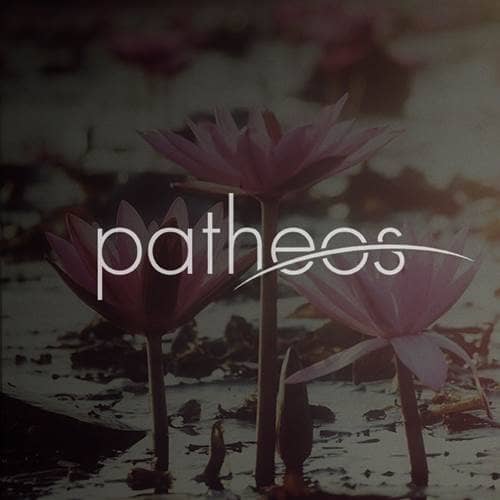- Trending:
- Pope Leo Xiv
- |
- Israel
- |
- Trump
- |
- Social Justice
- |
- Peace
- |
- Love

RELIGION LIBRARY
Zen
Gender and Sexuality
The Chan/Zen tradition has been dominated in many ways by men and by a traditionally masculine value system. The original Chinese word zu, translated into English as patriarch, is, like many Chinese terms, not gender specific. It means ancestor or grandparent. The word "patriarch" is an appropriate translation, however, as the Chinese term is grounded in a patrilineal system that privileges the male parent, grandparent, or ancestor.
The concept of lineage so essential to Chinese Chan was modeled after the family lineage system, an integral part of the Chinese cultural milieu. The all-important relationship of father to son was appropriated to describe the relationship between a Chan master and his dharma successors. This relationship was also mirrored in the Chan funeral tradition, in which the deceased was regarded as the son of the Chan master; in the case of the death of an abbot or master, the rites were those that would be normally conducted for one's father.
Perhaps the most famous female Chan master was Moshan Liaoran, who died in 895. She is the only woman to have her own record in an early "Record of the Transmission of the Lamp" anthology. She headed a male monastery and taught male students. Such a situation would be unusual even today.
Accounts of the 12th-century master Dahui's creation of the gongan (Japanese, koan) teaching method known as contemplating the critical phrase, state that he honed this technique while teaching a nun called Miaodao. Dahui and his contemporary Hongzhi taught many women, and were the first known Chan masters to leave numerous female dharma heirs.
Among the thousands of Chan and Zen masters whose biographies are recorded in later anthologies, only a few are women. A 17th-century biographer stated that men are virile and heroic, while women are gentle, passive, and weak, and incapable of meeting the rigors of the practice. While biographies of women masters were limited, large collections of poetry by women, among them many female Buddhist monastics, were published during the Ming and Qing dynasties (1368-1912).
There were and continue to be Chan monasteries for women in China, Japan (Zen), Korea (Soen), and Vietnam (Thien). Often these are less well supported than the male monasteries, and they have had less social and political influence. These women have been deterred by many restrictions to their avocations, but have persisted nonetheless.
Women were welcomed by Soen Buddhist orders in the kingdom of Silla in what is now Korea during the 6th and 7th centuries. In the 7th century, Silla's rulers were women, which suggests a level of equality not typical of other East Asian cultures of the time. Buddhist women flourished in Korea until the early 15th century, when gender separation was mandated and women were forbidden to become nuns. Surviving these difficulties, orders of Korean Buddhist women continue to this day, and are the most stable and continuous of East Asian female orders. Their opportunities are nonetheless limited in comparison to those of men, particularly in the area of education.
Several women were among the first, if not the first, Japanese Buddhists to be ordained, having traveled to Korea in the 6th century for that purpose. By the 9th century in Japan, however, before Zen had been established as a separate sect, the sacred mountains of both Tendai and Shingon Buddhism were declared off-limits to women. These restrictions were not lifted until early in the 20th century. Many establishments also refused to ordain women. Japanese women were not deterred, and they created a new category of Buddhist clergy for themselves: they shaved their heads, wore robes, and practiced as rigorously as did the men.
The 11th century Japanese founder of Soto Zen, Dogen, was known to have accepted female monastics and lay students. There are some contradictions in his writings, but at times he actively encouraged Zen practice by women. However, women were generally not steered toward the Buddhist clergy as an avocation. As in China, Japanese women who became nuns did so for a variety of reasons. Sometimes they wished to avoid marriage; sometimes they longed for an education; sometimes they were widowed at an early age or were in impoverished circumstances. Occasionally women from noble families became nuns, and their presence could bring fame, visitors, and financial benefits to the temples where they resided.
At the dawn of the 20th century, Buddhist nuns in Japan were required to wear the robes of novices regardless of age or experience. Soto Zen nuns had no training facilities and were not allowed to attend the main university of the sect. At that time, as Japan began to modernize and was influenced by an active feminist discourse, groups of Soto nuns began to organize and build their own training facilities and schools, and were able to get them accredited. They demanded the right to designate dharma heirs, participate in Soto governance, wear different robes, and be heads of temples. They also began to hold Soto Sect National Assemblies of Monastic Women. Today the largest community of nuns in Japan is a Soto convent in Nagoya that houses around 3,000 nuns.
Like all Buddhist monastics, Zen monks and nuns took the precept to avoid sexual activity, but the precept was not always followed. Some had liaisons, either heterosexual or homosexual, and a few, like Ikkyu, were famous for their sexual exploits, but these were the exception, rather than the rule.
After the Meiji Restoration in Japan, Zen monks, like the monks of all other Japanese Buddhist sects, began to marry and have families. As Japanese influence extended into Korea, Korean Buddhist monks also began to marry. Buddhist monks in Vietnam and China have continued to take the vow of celibacy. Zen and other Buddhist nuns in Japan and Korea have chosen to remain celibate as well. At this time, there is no tradition of married female monastics anywhere in the Buddhist world, but the wives of Japanese priests sometimes go through a period of spiritual training similar to that of nuns, and are sometimes referred to as nuns.
Study Questions:
1. What is the relationship between family lineage and Buddhist rule?
2. How have gender roles affected the participation of women within Zen?
3. How did Dogen view the role of women?
4. Is celibacy important to Zen monks? Why or why not?










